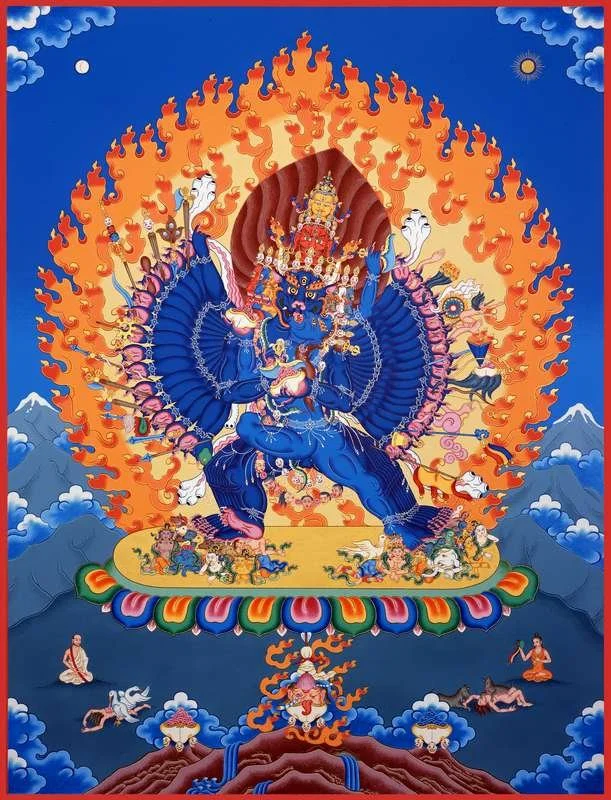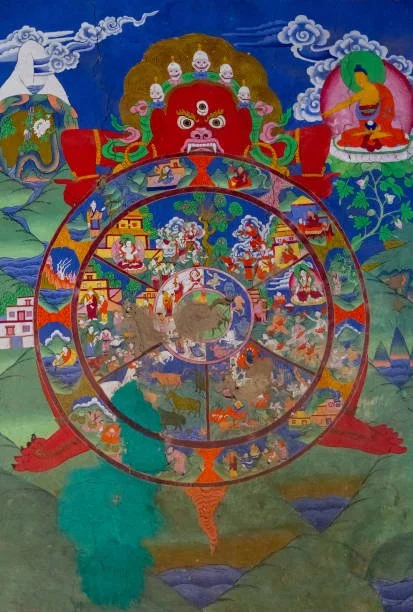Yamantaka Mandala of Fierce Compassion 2026 Tour
Mantras for 2026 Teaching and Empowerments
WE UPDATE THIS SECTION AS THE TOURS BEGIN AFTER EACH TEACHING OR EMPOWERMENT
Mantras for 2026 Teachings
We will post them as once they are presented during the teachings and empowerments
Mantras for 2025 Teachings
Compassion: Om mani pedme hung
Vajrasattva: Om benza sato hung or
Om Vajrasattva hung
Green Tara: Om tare tuttare ture soha
Vajravidarin Healing Ritual: Namah tsandra benza trodhaya hulu hulu tishta tishta benda benda hana hana amrite hung phat
Yamantaka Mandala of Fierce Compassion
The Yamantaka Mandala (Tibetan: Shinjeshe Kyilkhor) represents the enlightened manifestation of Manjushri, the Buddha of Wisdom, in his wrathful form as Yamantaka, the “Conqueror of Death.” The mandala is both a sacred diagram and a symbolic palace—a visionary architecture of the awakened mind—used in Highest Yoga Tantra (Anuttarayoga Tantra), specifically in the Yamantaka Tantra cycle, which is a central practice in the Gelug tradition founded by Je Tsongkhapa.
Visual Description: The mandala is typically depicted as a multi-layered geometric palace surrounded by rings of flames, vajras, lotus petals, and protective barriers symbolizing the transformation of ordinary perception into enlightened awareness.
At the center, Yamantaka appears as Vajrabhairava—dark blue, with multiple faces, arms, and legs—embracing his consort Vajravetali. His many heads represent mastery over the six realms and the union of wisdom and compassion; his fierce expression and powerful stance destroy ignorance and death. Surrounding the central figure are numerous deities and emanations, each embodying specific enlightened qualities such as compassion, clarity, and skillful means.
Symbolic Meaning
Wrath as Compassion: The ferocity of Yamantaka is not aggression—it is fierce compassion, cutting through ego-clinging and delusion.
Conquering Death: “Yama” means “death,” and “antaka” means “destroyer.” Yamantaka conquers not physical death but spiritual death—ignorance and attachment, the roots of samsara.
Mandala as Mind: The mandala mirrors the structure of the enlightened mind. Its outer walls protect against distraction; its inner palaces reflect the layers of subtle consciousness purified into wisdom.
Union of Method and Wisdom: The male and female aspects—Vajrabhairava and Vajravetali—represent the inseparable union of method (compassion) and wisdom (emptiness), the heart of Vajrayana realization.
Use and Practice: The Yamantaka mandala is used in tantric initiation (wang), meditation, and ritual practice to guide practitioners from dualistic perception into the realization of ultimate truth.
During empowerment, disciples are introduced to the mandala as a living environment, entering it symbolically through visualization.
In meditation, practitioners visualize themselves as Yamantaka within the mandala, transforming all perceptions into expressions of enlightened mind.
In ritual use, sand mandalas are created and later dissolved to symbolize impermanence and the non-duality of appearance and emptiness.
In the Gelug tradition, Yamantaka is especially revered as the principal yidam (meditational deity) of Tsongkhapa himself, representing the synthesis of wisdom, compassion, and power in service of enlightenment for all beings.
Take a minute to write an introduction that is short, sweet, and to the point.


